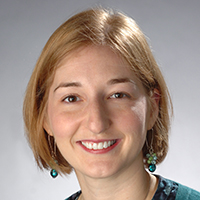A group of physicists from Syracuse University recently teamed up with researchers from Columbia University’s Department of Mechanical Engineering to study the developing tissue flow in an embryo that has many similar genes and cell behaviors to that of a human—the fruit fly (Drosophila).
As embryos develop, their tissues flow and reorganize dramatically on timescales as brief as minutes, narrowing and extending along their axes as the cells move. Combining experimental studies in the fruit fly embryo at Columbia with modeling approaches at Syracuse, the group determined that the shapes and alignment of cells within tissues can help to predict how tissues change shape during development.
These results may reveal fundamental mechanisms about human development and how abnormalities in developing tissue can result in birth defects. The team’s research paper, Anisotropy links cell shapes to tissue flow during convergent extension, was recently published in the prestigious journal “Proceedings of the National Academy of Sciences of the United States of America” (PNAS).

The team from Syracuse University included the study’s co-author, Lisa Manning, the William R. Kenan, Jr., Professor of Physics and founding director of BioInspired Syracuse: Institute for Material and Living Systems, postdoctoral researcher Matthias Merkel, former postdoctoral associate Gonca Erdemci-Tandogan and former student Leo Sutter, who was part of the Research Experiences for Undergraduates (REU) program. The group from Columbia was led by Principal Investigator Karen Kasza, Clare Boothe Luce Assistant Professor of Mechanical Engineering.
“Working with Professor Kasza’s group, we were really able to nail down precisely how changes to cell shapes drive changes to tissue mechanics,” says Manning. “It is amazing that we can now just look at a snapshot of cell shapes in the fruit fly and predict how cells will move.”
Read more about the collaboration between Syracuse University and Columbia University.
By Dan Bernardi, SU News
